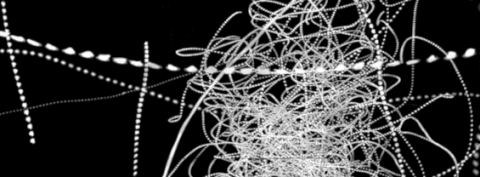NATURAL SWARMS IN 3.99 DIMENSIONS: LOOKING FOR UNIVERSAL LAWS IN THE COLLECTIVE BEHAVIOUR OF LIVING SYSTEMS

Speaker: Andrea Cavagna (Istituto dei Sistemi Complessi, CNR Roma)
Tuesday Apr 9, 2024, 4:00 PM
Aula Conversi (Dip. di Fisica - Edificio G. Marconi)
Abstract:
From the standpoint of physics, life is a mess. Biological phenomena cross spatial and temporal scales in a startling way, involving organisms that are greatly diverse at the structural and functional levels. Amid this jumble, though, some connections with the physical and mathematical sciences often emerge, stirring hopes to partially extend to biology the predictive power of theoretical physics. To pursue this idea, though, the great diversity of biology needs to be drastically simplified. Physics is optimally suited for this task, rooted as it is in the idea that not all microscopic details are important, as only a couple of relevant variables are needed to describe a system. The tool physics uses to cut irrelevant details is the renormalization group. In 1972, Kenneth Wilson and Michael Fisher wrote a seminal paper titled "Critical Exponents in 3.99 Dimensions", where they gave mathematical flesh to the idea that when we coarse-grain short-scale fluctuations the parameters of different models may flow towards the same fixed point ruling their large-scale behaviour, thus organizing into a handful of universality classes both statistical and quantum field theory. Can we use the renormalization group to describe the phenomena of life? Can we employ the same fundamental language to understand both the Higgs boson and a flock of starlings? In the field of collective behaviour the answer to this question seems to be positive. A unifying ingredient of collective biological systems is the presence of strong correlations: experiments in bird flocks, fish schools, mammal herds, insect swarms, and bacterial clusters find that the correlation length is significantly larger than the microscopic scales, a natural stepping stone to an RG analysis. In this talk, I will provide a very simplified explanation of the renormalization group (mostly using Google Maps) and then show how it can be applied to the study of natural swarms of insects, which are strongly correlated systems obeying dynamic scaling with an experimental dynamical exponent z=1.37 +/- 0.11. A one-loop RG calculation that takes into account both off-equilibrium activity and inertial dynamics gives z=1.35, a value remarkably close to the experimental exponent. This is the first positive test within biophysics of an RG prediction, hence strengthening our hopes that the renormalization group and its most fruitful consequence - universality - may have an incisive impact also in biology.
Zoom link: https://uniroma1.zoom.us/j/82330282429?pwd=MktKdmlkSUxxdXlraFhKSHhJTDZnUT09
https://agenda.infn.it/event/40619/
Research links:
https://www.nature.com/articles/s41567-023-02028-0
https://www.isc.cnr.it/groups/cobbs/
